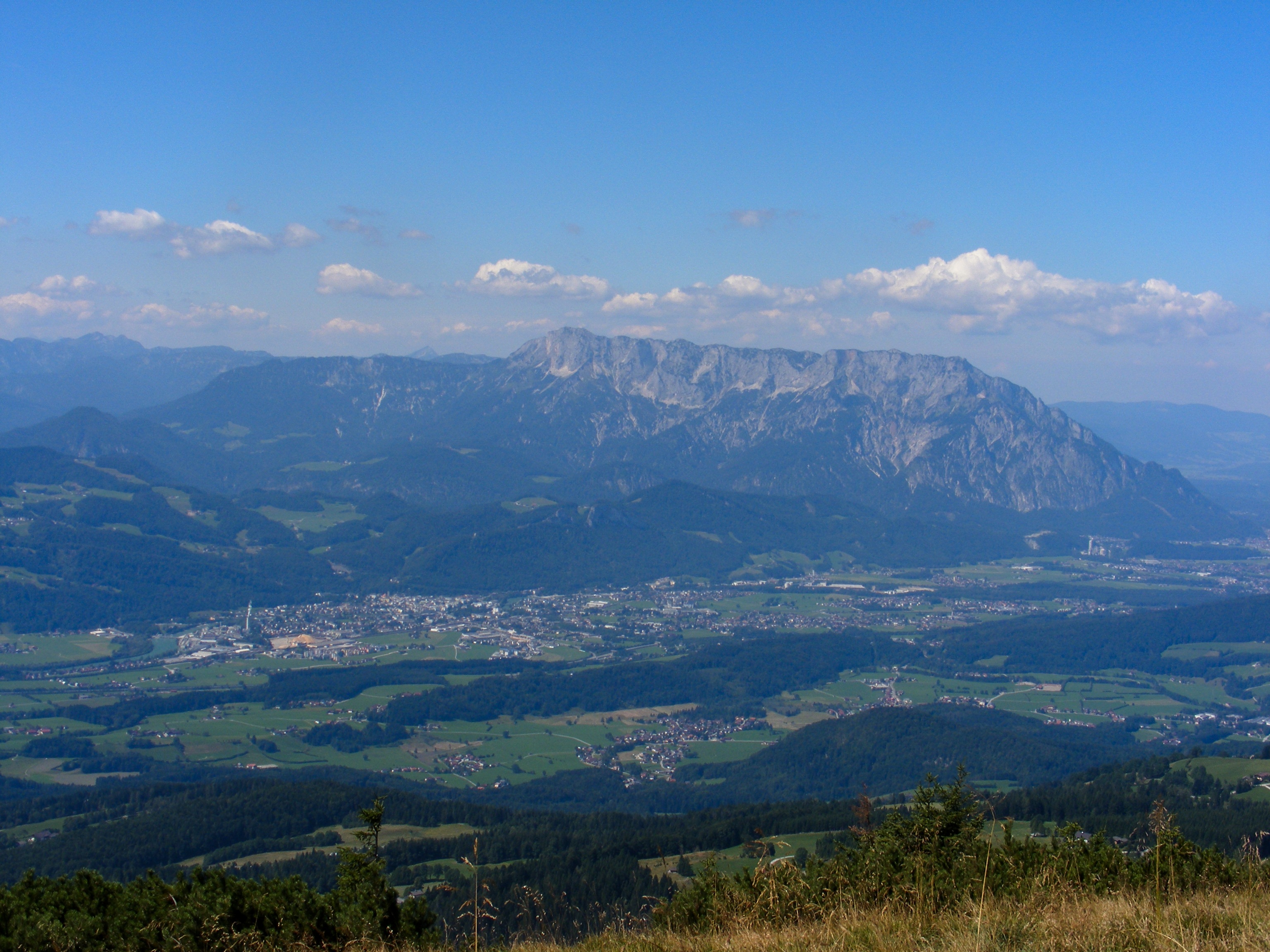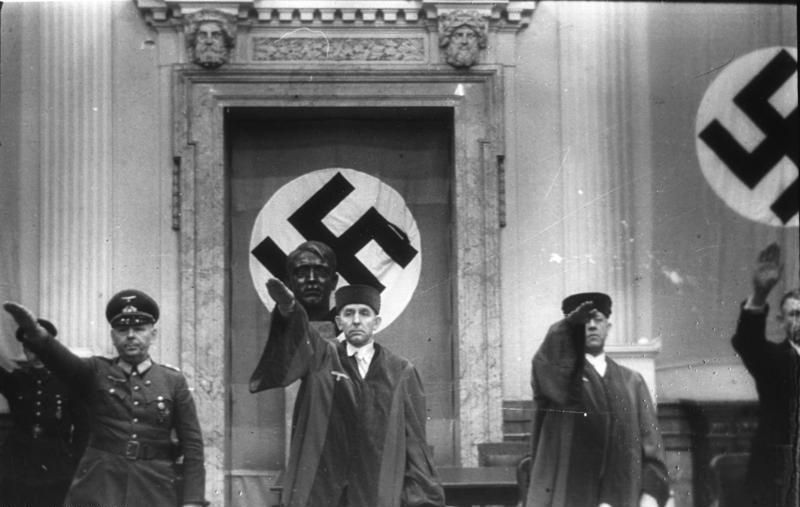|
Rosa Hofmann
Rosa Hofmann (27 May 1919 – 9 March 1943) was an Austrian Communist Youth leader who became a resistance activist during the 1930s. In 1943, she was arrested and taken to Berlin where she faced trial, conviction and execution. Life Family provenance and early years Rosa "Ratzi" Hofmann was born in Wilhering (near Linz) and grew up in the Maxglan quarter of Salzburg. Josef Hoffmann, her father was a Social Democratic trades unionist and a member of the "Schutzbund" paramilitary organisation established during the 1920s to protect the young republic against a surge in political extremism. The children imbibed their socialist beliefs from their parents as they grew up. Josef Hoffmann shot himself in February 1932 after learning that he had been dismissed from the Stiegl brewery where he had been working. He was just 44, and was still suffering badly from the after-effects of wounds sustained in the First World War. Cäcilia, his widow, was left with the four children. Politic ... [...More Info...] [...Related Items...] OR: [Wikipedia] [Google] [Baidu] |
Communist Party Of Austria
The Communist Party of Austria (german: Kommunistische Partei Österreichs, KPÖ) is a communist party in Austria. Established in 1918 as the Communist Party of German-Austria (KPDÖ), it is one of the world's oldest communist parties. The KPÖ was banned between 1933 and 1945 under both the Austrofascist regime and the Nazi German administration of Austria after the 1938 ''Anschluss''. It played an important role in the Austrian resistance against the Nazis. The party currently holds two seats in the Styrian ''Landtag'' (state parliament), but has not had representation in the National Council (''Nationalrat'', Austria's federal parliament) since 1959. In the legislative election held on 29 September 2019, it won only 0.7% of the votes (32,736 out of a total of 4,835,469), well below the 4% minimum to obtain seats in the National Council. At the local level, the KPÖ has held the mayorship of Graz, Austria's second largest city, since 2021, and holds over 130 seats on district ... [...More Info...] [...Related Items...] OR: [Wikipedia] [Google] [Baidu] |
Anschluss
The (, or , ), also known as the (, en, Annexation of Austria), was the annexation of the Federal State of Austria into the Nazi Germany, German Reich on 13 March 1938. The idea of an (a united Austria and Germany that would form a "German Question, Greater Germany") began after the unification of Germany excluded Austria and the German Austrians from the Prussian-dominated German Empire in 1871. Following the end of World War I with the fall of the Austria-Hungary, Austro-Hungarian Empire, in 1918, the newly formed Republic of German-Austria attempted to form a union with Germany, but the Treaty of Saint-Germain-en-Laye (1919), Treaty of Saint Germain (10 September 1919) and the Treaty of Versailles (28 June 1919) forbade both the union and the continued use of the name "German-Austria" (); and stripped Austria of some of its territories, such as the Sudetenland. Prior to the , there had been strong support in both Austria and Germany for unification of the two countrie ... [...More Info...] [...Related Items...] OR: [Wikipedia] [Google] [Baidu] |
Hallein
Hallein () is a historic town in the Austrian state of Salzburg. It is the capital of Hallein district. Geography The town is located in the ''Tennengau'' region south of the City of Salzburg, stretching along the Salzach river in the shadow of the Untersberg massif, close to the border with Germany in the west. With a population of about 21,150, Hallein is the second largest town of the Salzburg state. The municipal area comprises the cadastral communities of Adnet II, Au, Burgfried, Dürrnberg, Gamp, Gries, Hallein proper, Oberalm II, and Taxach. Hallein can be reached by suburban ''S-Bahn'' railway from the city of Salzburg. It has also access to the '' A 10'' Tauern Autobahn (European route E55) from Salzburg to Villach. History Long known for the Hallein Salt Mine in the ''Dürrnberg'' plateau, settling in the area have been traced 4000 years back. It was a Celtic community from 600 BCE until the Romans took over their Noricum kingdom in 15 BCE. In the mid 8th cent ... [...More Info...] [...Related Items...] OR: [Wikipedia] [Google] [Baidu] |
People's Court (Germany)
The People's Court (german: Volksgerichtshof, acronymed to ''VGH'') was a ' ("special court") of Nazi Germany, set up outside the operations of the constitutional frame of law. Its headquarters were originally located in the former Prussian House of Lords in Berlin, later moved to the former '' Königliches Wilhelms-Gymnasium'' at Bellevuestrasse 15 in Potsdamer Platz (the location now occupied by the Sony Center; a marker is located on the sidewalk nearby). The court was established in 1934 by order of Reich Chancellor Adolf Hitler, in response to his dissatisfaction at the outcome of the Reichstag fire trial in front of the Reich Court of Justice (''Reichsgericht'') in which all but one of the defendants were acquitted. The court had jurisdiction over a rather broad array of "political offenses", which included crimes like black marketeering, work slowdowns, defeatism, and treason against Nazi Germany. These crimes were viewed by the court as '' Wehrkraftzersetzung'' ("the ... [...More Info...] [...Related Items...] OR: [Wikipedia] [Google] [Baidu] |
Gestapo
The (), abbreviated Gestapo (; ), was the official secret police of Nazi Germany and in German-occupied Europe. The force was created by Hermann Göring in 1933 by combining the various political police agencies of Prussia into one organisation. On 20 April 1934, oversight of the Gestapo passed to the head of the '' Schutzstaffel'' (SS), Heinrich Himmler, who was also appointed Chief of German Police by Hitler in 1936. Instead of being exclusively a Prussian state agency, the Gestapo became a national one as a sub-office of the (SiPo; Security Police). From 27 September 1939, it was administered by the Reich Security Main Office (RSHA). It became known as (Dept) 4 of the RSHA and was considered a sister organisation to the (SD; Security Service). During World War II, the Gestapo played a key role in the Holocaust. After the war ended, the Gestapo was declared a criminal organisation by the International Military Tribunal (IMT) at the Nuremberg trials. History Af ... [...More Info...] [...Related Items...] OR: [Wikipedia] [Google] [Baidu] |
Walter Kämpf
Walter Kämpf (12 September 1920 – 2 November 1943) was an Austrian anti-Nazi activist. He became a resistance member when he was still at school in Vienna. Following his conscription in 1939 he was also a soldier. He was subsequently suspected of "spying" and convicted by a military court. His death sentence was carried out using the guillotine that had been installed at the Vienna Regional Court complex, soon after the incorporation of Austria into an expanding German state. Life Kämpf was born in Vienna. He attended the Döblinger Gymnasium (secondary school) on the north side of the city, but left early in order to progress to the Höhere Bundeslehr- und Versuchsanstalt für chemische Industrie, a prestigious vocational college which had been established during the early years of the twentieth century to train students for graduate-level careers in the important chemicals industry. He was excluded from the college in 1936, however, for "kommunistischer Betätigung" ... [...More Info...] [...Related Items...] OR: [Wikipedia] [Google] [Baidu] |
Wehrmacht
The ''Wehrmacht'' (, ) were the unified armed forces of Nazi Germany from 1935 to 1945. It consisted of the ''Heer'' (army), the ''Kriegsmarine'' (navy) and the ''Luftwaffe'' (air force). The designation "''Wehrmacht''" replaced the previously used term and was the manifestation of the Nazi regime's efforts to rearm Germany to a greater extent than the Treaty of Versailles permitted. After the Nazi rise to power in 1933, one of Adolf Hitler's most overt and audacious moves was to establish the ''Wehrmacht'', a modern offensively-capable armed force, fulfilling the Nazi régime's long-term goals of regaining lost territory as well as gaining new territory and dominating its neighbours. This required the reinstatement of conscription and massive investment and defense spending on the arms industry. The ''Wehrmacht'' formed the heart of Germany's politico-military power. In the early part of the Second World War, the ''Wehrmacht'' employed combined arms tactics (close- ... [...More Info...] [...Related Items...] OR: [Wikipedia] [Google] [Baidu] |



